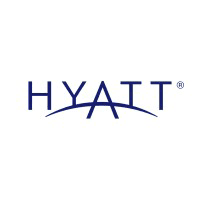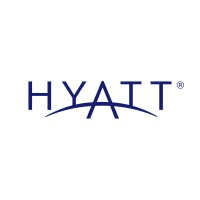
Curio Hotel
How much does Curio Hotel cost?
Initial Investment Range
$4,683,359 to $143,454,204
Franchise Fee
$501,375
You will operate a Curio hotel under a Franchise Agreement with us.
Enjoy our partial free risk analysis below
Unlock the full risk analysis to access 9 more categories covering 100+ risks.
Curio Hotel March 30, 2025 FDD Risk Analysis
Free FDD Library AI Analysis Date: August 22, 2025
DISCLAIMER: Not Legal Advice - For Informational Purposes Only. Consult With Qualified Franchise Professionals.
Franchisor Stability Risks
Start HereDisclosure of Franchisor's Financial Instability
Low Risk
Explanation
The financial statements for Hilton Franchise Holding LLC (Hilton LLC), audited by Cherry Bekaert LLP, show a financially strong and stable company. For the year ending December 31, 2024, the company reported net income of over $1.48 billion. There are no indicators of financial instability, such as a going concern note, that would pose a risk to the franchisor's ability to support the system. This is a positive finding for a prospective franchisee.
Potential Mitigations
- An accountant should review the provided financial statements, including the notes, to confirm the franchisor's financial health and capitalization.
- Seeking advice from a financial advisor on how the franchisor's strong financial position might translate into brand investment and support is beneficial.
- During discussions with current franchisees, a business advisor can help you inquire about their perception of the franchisor's financial commitment to the brand.
High Franchisee Turnover
Medium Risk
Explanation
Item 20 data for 2024 shows that out of 71 franchised hotels at the start of the year, 6 left the system through termination (2) or ceasing operations for other reasons (4). This represents an annual turnover rate of approximately 8.5%. While not extremely high for a large system, the number of units that 'ceased operations for other reasons' is notable and could indicate underlying issues not immediately apparent from the statistics.
Potential Mitigations
- It is important to contact former franchisees listed in Exhibit B to understand their reasons for leaving the system; an attorney can help frame appropriate questions.
- Discussing the specific circumstances behind the terminations and ceased operations with the franchisor can provide valuable context.
- Your accountant can help you analyze the turnover data over the three-year period to identify any negative trends.
Rapid System Growth
Low Risk
Explanation
Item 20 shows steady growth, with a net increase of 9 franchised hotels in 2024. Given that the franchisor is Hilton, a very large and experienced global hospitality company with substantial financial resources as shown in Item 21, the risk of growth outpacing support capabilities is low. The infrastructure to support new hotels appears well-established.
Potential Mitigations
- A business advisor can help you assess the support structure by asking current franchisees about the quality and timeliness of assistance they receive.
- In discussions with the franchisor, inquire about the specific support team and resources dedicated to new hotel openings.
- A review of the franchisor's organizational structure with your attorney could provide insight into their capacity for managing growth.
New/Unproven Franchise System
Low Risk
Explanation
The risk of an unproven system is not present. Item 1 indicates the Curio Collection brand has been franchising in the US since 2014. The franchisor, Hilton LLC, and its parent companies have decades of experience in the hotel and franchising industries, as detailed in Items 1 and 2. The system has a substantial number of operating units, and Item 21 shows significant financial strength, indicating a well-established and proven system.
Potential Mitigations
- It is still valuable to have a business advisor help you speak with franchisees who have been in the system for various lengths of time to gather diverse perspectives.
- Engaging an accountant to review the historical performance data in Item 19 can provide additional insight into the system's track record.
- Legal counsel should be consulted to review the entire FDD package, even for established systems, to identify any unique risks.
Possible Fad Business
Low Risk
Explanation
The risk of this business being a fad is not identified. The Curio Collection by Hilton is part of the larger Hilton portfolio, which operates in the established hotel and lodging industry. This is a mature market with long-term consumer demand. The brand itself focuses on unique, independent-style hotels, a segment that appeals to travelers seeking distinct experiences, which is a durable trend rather than a short-term fad.
Potential Mitigations
- Working with a business advisor to analyze long-term trends in the boutique and independent hotel market can provide useful market context.
- Inquiring with the franchisor about their strategy for keeping the Curio Collection brand fresh and competitive is a prudent step.
- An accountant can help assess the financial resilience of this hotel segment based on industry reports and the Item 19 data provided.
Inexperienced Management
Low Risk
Explanation
This risk is not present. Item 2 lists the directors and principal officers, such as Christopher J. Nassetta and Kevin J. Jacobs, who have extensive, long-term experience within Hilton and the broader hospitality and franchising industries. The management team is seasoned and has a deep track record of operating large-scale hotel franchise systems, mitigating the risk associated with inexperienced leadership.
Potential Mitigations
- Researching the public profiles and career histories of the key executives listed in Item 2 can provide additional confidence; a business advisor may assist.
- When speaking with current franchisees, you can inquire about their direct experiences and the perceived competence of the leadership team.
- An attorney can review the stability of the management team as presented in Item 2 over previous FDDs if available.
Private Equity Ownership
Medium Risk
Explanation
Hilton Worldwide Holdings Inc. is a publicly traded company (NYSE: HLT), not a privately held one. However, the risk of ownership changes and their potential impact still exists. FA § 12.1 gives the franchisor the broad right to transfer or assign the Franchise Agreement to any person or legal entity without your consent. This means the system could be sold, and you could find yourself in a relationship with a new owner with different priorities or capabilities.
Potential Mitigations
- A franchise attorney should explain the implications of the broad assignment rights the franchisor retains in the agreement.
- It may be beneficial to have a business advisor research Hilton's historical ownership structure and any past sales of its brands.
- Understanding that you have little control over a future sale of the franchise system is a key risk to accept before investing.
Non-Disclosure of Parent Company
Low Risk
Explanation
This risk was not identified. The FDD clearly discloses the parent companies in Item 1, including Hilton Domestic Operating Company Inc. and the ultimate public parent, Hilton Worldwide Holdings Inc. Furthermore, the franchisor's own audited financial statements are provided in Exhibit C. There is no indication that required parent company financial information is being withheld.
Potential Mitigations
- An accountant should review the provided financials to ensure they give a complete picture of the entity you are contracting with.
- Your attorney can confirm that the disclosures regarding parent companies and affiliates in Item 1 are compliant with franchise regulations.
- Engaging a business advisor to research the relationship between Hilton's various entities can provide a fuller understanding of the corporate structure.
Predecessor History Issues
Low Risk
Explanation
This risk does not appear to be present. Item 1 provides a detailed history of the franchisor, its parent companies, and various predecessors for multiple Hilton brands, including predecessor names and dates of operation. While complex, the history appears to be disclosed. For the Curio brand specifically, the predecessor listed is Hilton Inns, Inc. This level of detail seems adequate and does not suggest an attempt to obscure negative history.
Potential Mitigations
- A franchise attorney should be consulted to review the complex predecessor and affiliate history detailed in Item 1.
- In conversations with long-standing franchisees, a business advisor can help you ask about their experiences under any predecessor entities.
- It is useful to have your accountant analyze if any historical financial data might be impacted by these corporate changes.
Pattern of Litigation
High Risk
Explanation
Item 3 discloses multiple pending class-action lawsuits alleging that Hilton and other hotel defendants violated antitrust laws by using revenue management software (e.g., IDeaS, STR) to conspire to set room rates at artificially high levels. It also details recent multi-million dollar settlements with the states of Texas and Nebraska over misleading mandatory guest fee disclosures. This pattern of significant, systemic litigation on fundamental business practices represents a high risk to the system's stability and operations.
Potential Mitigations
- Your franchise attorney must carefully review and explain the nature and potential impact of the antitrust and consumer protection litigation disclosed in Item 3.
- Discussing these legal challenges with current franchisees can provide insight into how these issues are affecting their operations.
- A business advisor can help you research the broader industry implications of the alleged algorithmic price-fixing lawsuits.
Disclosure & Representation Risks
Example Risk: Franchisee Financial Obligations
Blue Risk
Explanation
This risk involves the financial obligations that a franchisee must meet, including initial fees, ongoing royalties, and other required payments. Understanding these obligations is crucial for long-term success.
Potential Mitigations
- Carefully review the Franchise Disclosure Document (FDD) and consult with a franchise attorney to fully understand all financial commitments before signing.
- Conduct regular risk assessments
- Implement monitoring and reporting systems
Unlock Full Risk Analysis
Purchase the complete risk review to see all 102 risks across all 10 categories.
Financial & Fee Risks
Example Risk: Franchisee Financial Obligations
Blue Risk
Explanation
This risk involves the financial obligations that a franchisee must meet, including initial fees, ongoing royalties, and other required payments. Understanding these obligations is crucial for long-term success.
Potential Mitigations
- Carefully review the Franchise Disclosure Document (FDD) and consult with a franchise attorney to fully understand all financial commitments before signing.
- Conduct regular risk assessments
- Implement monitoring and reporting systems
Unlock Full Risk Analysis
Purchase the complete risk review to see all 102 risks across all 10 categories.
Legal & Contract Risks
Example Risk: Franchisee Financial Obligations
Blue Risk
Explanation
This risk involves the financial obligations that a franchisee must meet, including initial fees, ongoing royalties, and other required payments. Understanding these obligations is crucial for long-term success.
Potential Mitigations
- Carefully review the Franchise Disclosure Document (FDD) and consult with a franchise attorney to fully understand all financial commitments before signing.
- Conduct regular risk assessments
- Implement monitoring and reporting systems
Unlock Full Risk Analysis
Purchase the complete risk review to see all 102 risks across all 10 categories.
Territory & Competition Risks
Example Risk: Franchisee Financial Obligations
Blue Risk
Explanation
This risk involves the financial obligations that a franchisee must meet, including initial fees, ongoing royalties, and other required payments. Understanding these obligations is crucial for long-term success.
Potential Mitigations
- Carefully review the Franchise Disclosure Document (FDD) and consult with a franchise attorney to fully understand all financial commitments before signing.
- Conduct regular risk assessments
- Implement monitoring and reporting systems
Unlock Full Risk Analysis
Purchase the complete risk review to see all 102 risks across all 10 categories.
Regulatory & Compliance Risks
Example Risk: Franchisee Financial Obligations
Blue Risk
Explanation
This risk involves the financial obligations that a franchisee must meet, including initial fees, ongoing royalties, and other required payments. Understanding these obligations is crucial for long-term success.
Potential Mitigations
- Carefully review the Franchise Disclosure Document (FDD) and consult with a franchise attorney to fully understand all financial commitments before signing.
- Conduct regular risk assessments
- Implement monitoring and reporting systems
Unlock Full Risk Analysis
Purchase the complete risk review to see all 102 risks across all 10 categories.
Franchisor Support Risks
Example Risk: Franchisee Financial Obligations
Blue Risk
Explanation
This risk involves the financial obligations that a franchisee must meet, including initial fees, ongoing royalties, and other required payments. Understanding these obligations is crucial for long-term success.
Potential Mitigations
- Carefully review the Franchise Disclosure Document (FDD) and consult with a franchise attorney to fully understand all financial commitments before signing.
- Conduct regular risk assessments
- Implement monitoring and reporting systems
Unlock Full Risk Analysis
Purchase the complete risk review to see all 102 risks across all 10 categories.
Operational Control Risks
Example Risk: Franchisee Financial Obligations
Blue Risk
Explanation
This risk involves the financial obligations that a franchisee must meet, including initial fees, ongoing royalties, and other required payments. Understanding these obligations is crucial for long-term success.
Potential Mitigations
- Carefully review the Franchise Disclosure Document (FDD) and consult with a franchise attorney to fully understand all financial commitments before signing.
- Conduct regular risk assessments
- Implement monitoring and reporting systems
Unlock Full Risk Analysis
Purchase the complete risk review to see all 102 risks across all 10 categories.
Term & Exit Risks
Example Risk: Franchisee Financial Obligations
Blue Risk
Explanation
This risk involves the financial obligations that a franchisee must meet, including initial fees, ongoing royalties, and other required payments. Understanding these obligations is crucial for long-term success.
Potential Mitigations
- Carefully review the Franchise Disclosure Document (FDD) and consult with a franchise attorney to fully understand all financial commitments before signing.
- Conduct regular risk assessments
- Implement monitoring and reporting systems
Unlock Full Risk Analysis
Purchase the complete risk review to see all 102 risks across all 10 categories.
Miscellaneous Risks
Example Risk: Franchisee Financial Obligations
Blue Risk
Explanation
This risk involves the financial obligations that a franchisee must meet, including initial fees, ongoing royalties, and other required payments. Understanding these obligations is crucial for long-term success.
Potential Mitigations
- Carefully review the Franchise Disclosure Document (FDD) and consult with a franchise attorney to fully understand all financial commitments before signing.
- Conduct regular risk assessments
- Implement monitoring and reporting systems
Unlock Full Risk Analysis
Purchase the complete risk review to see all 102 risks across all 10 categories.











